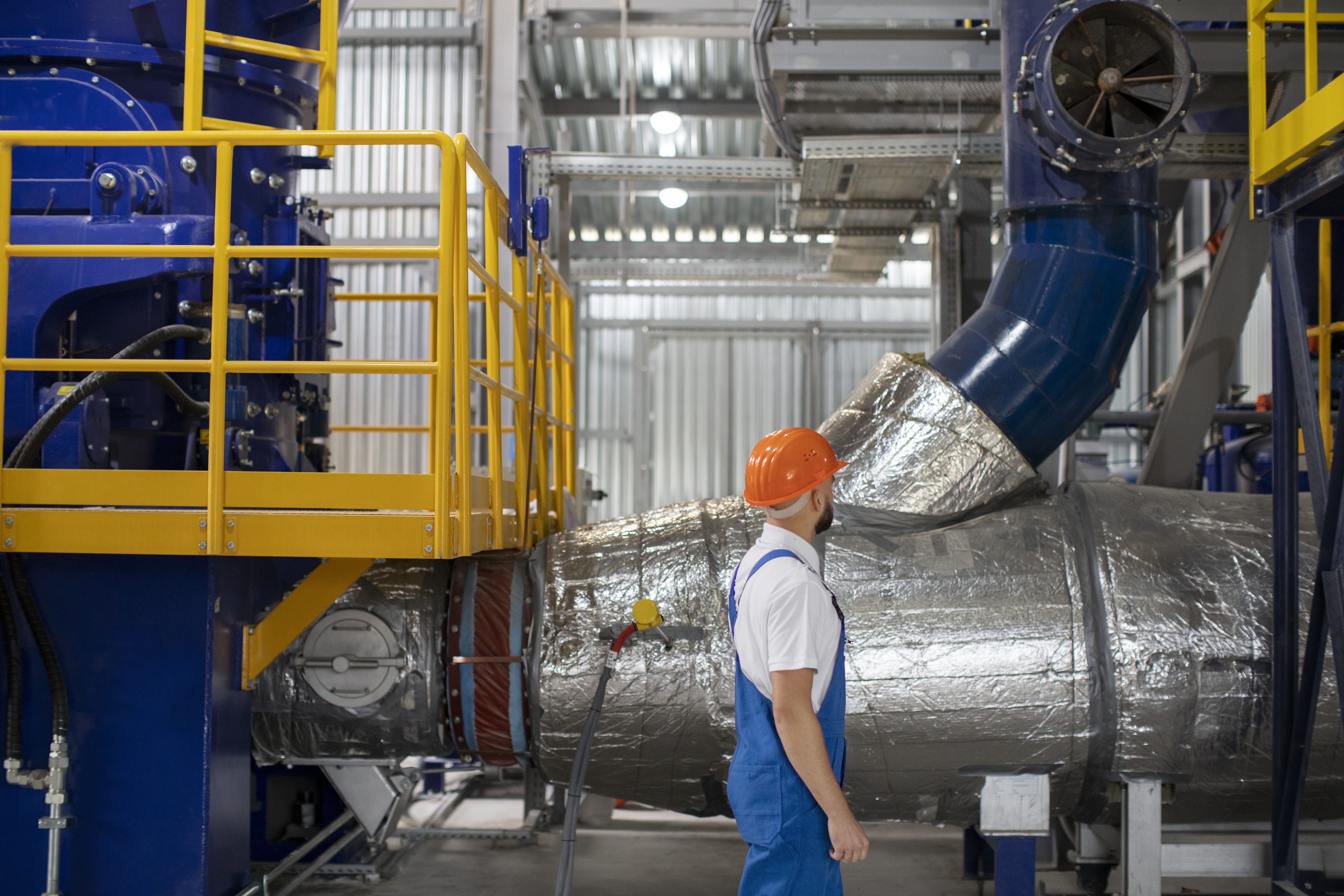Managing Corrosion in Commercial HVAC Piping Systems
Corrosion is a major concern in commercial HVAC piping systems, impacting system efficiency, safety, and longevity. HVAC piping transports refrigerants, chilled water, or heated fluids essential for heating, cooling, and ventilation in commercial buildings. Corrosion causes material degradation, leaks, blockages, and ultimately system failures, leading to costly repairs and operational downtime. Proper management of corrosion is vital for maintaining HVAC reliability, energy efficiency, indoor air quality, and compliance with building standards. This blog explores the causes, effects, and best practices for managing corrosion in commercial HVAC piping systems.
Understanding Corrosion in HVAC Systems
Corrosion is the chemical or electrochemical reaction between metals and their environment, resulting in metal deterioration. In HVAC piping, corrosion occurs internally within pipes exposed to fluids and externally due to ambient air, moisture, and environmental pollutants. Common corrosion types affecting HVAC piping include galvanic corrosion, pitting, crevice corrosion, and microbiologically influenced corrosion (MIC).
Galvanic corrosion arises when dissimilar metals in contact create a galvanic cell in the presence of an electrolyte, such as water, accelerating corrosion in the more anodic metal. Pitting is localized corrosion forming small cavities or pits that weaken pipe walls. Crevice corrosion occurs in shielded areas with stagnant fluids causing oxygen depletion. MIC involves microbial growth in piping systems producing corrosive byproducts that degrade metal surfaces. Understanding these corrosion mechanisms is essential for identifying vulnerabilities and selecting appropriate mitigation strategies.
Causes of Corrosion in HVAC Piping Systems
Several factors contribute to corrosion in commercial HVAC piping systems. Water quality is a primary determinant; impurities like dissolved oxygen, carbon dioxide, chlorides, and hardness minerals accelerate corrosion. Improper pH levels can also enhance metal degradation. Leaks, condensation, and moisture accumulation, especially in concealed or poorly ventilated areas, lead to external corrosion.
Material selection plays a significant role in corrosion susceptibility. Metals such as steel, copper, and aluminum are commonly used in HVAC piping, each with varying corrosion resistance. Joining incompatible metals without proper isolation can induce galvanic
corrosion. Poor installation practices, mechanical damage, and lack of protective coatings or insulation exacerbate corrosion risks. Additionally, microbial contamination in cooling towers or humidifiers promotes MIC.
Impacts of Corrosion on HVAC Operations
Corrosion in HVAC piping systems leads to multiple operational issues. Metal loss due to corrosion thins pipe walls, increasing the risk of leaks or bursts that cause fluid loss and property damage. Corroded pipes often clog or restrict fluid flow, reducing heating or cooling efficiency and increasing energy consumption.
Leaks caused by corrosion can result in refrigerant loss, harming the environment and violating regulations. Corrosion also compromises indoor air quality by contaminating fluids or facilitating mold growth in damp areas. Frequent repairs or emergency shutdowns increase maintenance costs and disrupt business activities. Furthermore, corrosion-related failures can jeopardize occupant comfort and safety, underscoring the necessity of effective corrosion management.
Best Practices for Corrosion Management
A comprehensive approach to corrosion management in HVAC piping involves prevention, monitoring, and timely maintenance:
Material Selection and Design
Use corrosion-resistant materials, such as stainless steel or coated pipes, especially in aggressive environments. Employ appropriate isolation techniques to separate dissimilar metals. Properly design piping layouts to avoid stagnant areas and ensure adequate drainage and ventilation.
Water Treatment and Quality Control
Maintain proper water chemistry for chilled and heating water systems by controlling pH, hardness, and dissolved oxygen levels. Implement chemical treatment programs using corrosion inhibitors tailored to the system’s material and operating conditions. Regularly test water samples to detect changes indicating corrosion risks.
Protective Coatings and Insulation
Apply external coatings on pipes to protect against environmental corrosion. Use quality insulation materials with moisture barriers to prevent condensation and external corrosion. Inspect and maintain insulation integrity regularly.
Regular Inspection and Monitoring
Employ routine visual inspections, non-destructive testing (NDT) methods such as ultrasonic thickness testing, and corrosion probes to detect early signs of corrosion. Implement corrosion monitoring systems integrated with building management systems for continuous oversight.
Microbial Control
Control microbial growth by maintaining system cleanliness, using biocides in cooling towers, and avoiding water stagnation. Regular cleaning and disinfection reduce MIC risks.
Prompt Repair and Replacement
Address detected corrosion damage swiftly to prevent escalation. Replace heavily corroded pipes or components to maintain system integrity.
Emerging Technologies in Corrosion Management
Innovations in sensor technology and data analytics are revolutionizing corrosion management. Internet of Things (IoT)-enabled corrosion sensors provide real-time data on pipe conditions, enabling predictive maintenance instead of reactive repairs. Corrosion mapping and 3D modeling help in pinpointing high-risk areas and optimizing repair schedules.
Advanced chemical inhibitors with environmentally friendly compositions are gaining traction, minimizing environmental impact while offering superior protection. Robotics and automated cleaning systems improve access to difficult piping segments, enhancing maintenance efficiency and safety
Conclusion
Managing corrosion in commercial HVAC piping systems is critical to ensuring system reliability, efficiency, and safety. Understanding corrosion mechanisms, implementing preventive measures, and leveraging modern monitoring technologies enable facility managers and engineers to minimize corrosion-related damages and costs. A proactive, holistic approach to corrosion control enhances the lifespan of HVAC infrastructure, lowers operational risks, and supports sustainable building operations.

